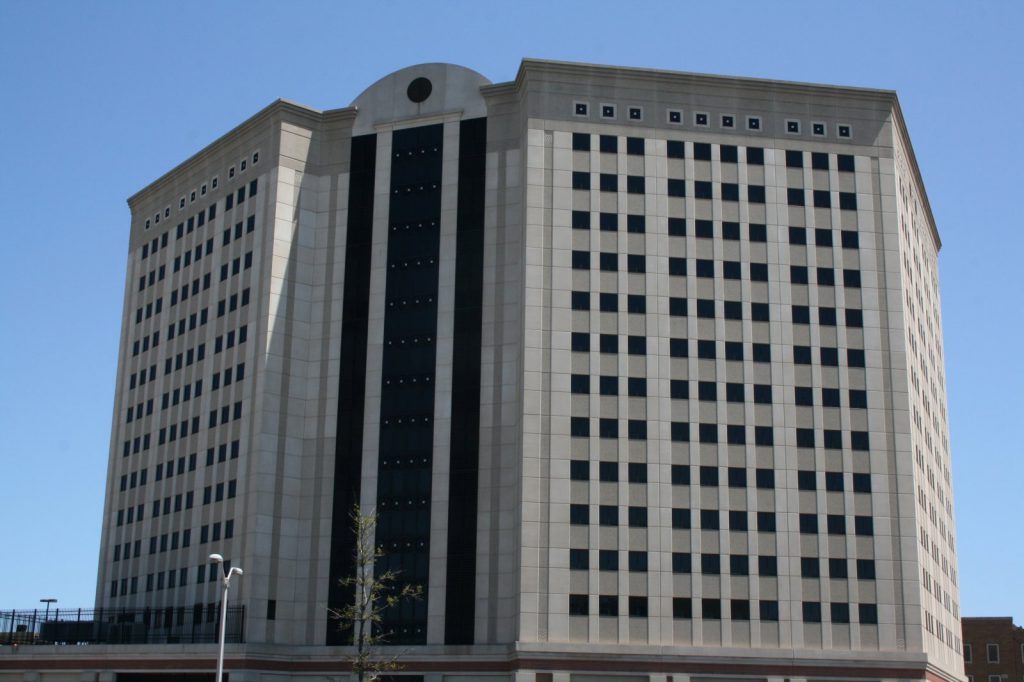Charting The Racial Disparities In State’s Prisons
Four charts show Wisconsin is worse than nearly every state.
Wisconsin’s use of incarceration to lock up a staggering share of its population of color inflicts serious harm on individuals and communities. New figures show the racial disparities in Wisconsin’s incarceration rates far exceed disparities at the national level, which themselves are stark. The result is a system that deepens the divide between whites and people of color, and uses public resources to do so.
Some drivers of the disparities in incarceration rates have their roots in historical and present-day racial discrimination in Wisconsin’s housing, health care system, schools, and job market. These structural disadvantages can limit opportunity for people of color.
This systemic racism continues to impact people and communities of color even after incarceration. The consequences of incarceration are long-lasting when it comes to finding housing and employment.
These disparities in incarceration are not new. They have been long been significant in Wisconsin.
Here are four charts that show the cost of Wisconsin’s incarceration policies. The figures on incarceration rates are from a report by The Sentencing Project, The Color of Justice: Racial and Ethnic Disparity in State Prisons.
1. Wisconsin’s imprisonment rate for Black residents far exceeds the national average.
In Wisconsin, 2,742 out of every 100,000 Black residents are imprisoned, 2.2 times the national rate for Black residents.
Wisconsin imprisons Latinx residents at a rate of 475 per 1000,000, or 1.4 times the national rate.
In contrast to the Black and Latinx imprisonment rates, Wisconsin locks up a smaller share of its white population than the national average. Wisconsin imprisons 230 white residents per 100,000, only about 0.9 times the national average. This means a white resident of Wisconsin is about 10% less likely to be locked up than a white person in the rest of the country as a whole.
2. Wisconsin locks up a higher share of our Black residents than any other state. Only six states have higher Latinx imprisonment rates than Wisconsin does.
Wisconsin ranks among the states with the highest incarceration rates for people of color: 1st for Black imprisonment rates and 7th for Latinx rates. In contrast, Wisconsin ranked 30th — in the bottom half of states — for white imprisonment rates.
3. Wisconsin has the second-highest Black/White incarceration differential of any state.
Nationally, the Black incarceration rate is 4.8 times higher than the white rate. In Wisconsin, it’s even higher, with Black residents 11.9 times as likely to be locked up than white residents. Only New Jersey has a higher Black/white differential, in part because New Jersey’s white incarceration rate is much lower than the national average.
4. Wisconsin’s corrections costs have long been high compared to other states.
The human cost of Wisconsin’s gravely unjust system is incalculable. The monetary cost is also substantial. For years, Wisconsin state and local governments have spent more than the national average on corrections, measured as a share of personal income. In 2018, Wisconsin governments spent $5.31 for every $1,000 in personal income on corrections, compared to $4.74 for the national average. Measured this way, Wisconsin spends 10.7% more on corrections than the national average.
Wisconsin’s inequitable incarceration policies are a result of decisions made by state and local policymakers, and there are steps policymakers can take to move Wisconsin towards more equitable outcomes. Here are three steps that The Sentencing Project recommends Wisconsin and other states take to address disparities:
- Return 17 year-olds to the juvenile justice system. Only two states other than Wisconsin require all 17 year olds to be tried as adults, which increases sentence length and imposes especially harsh sentences on youth of color. Read more.
- Require racial impact statements for all criminal statutes. Policymakers should know the effects of laws that they are passing. It’s important to evaluate the effect of both new laws and already-existing laws and policies, to maximize the impact of these statements.
- Decriminalize low-level drug offenses. Prior convictions can accumulate and pull people further into the criminal legal system. In Wisconsin, Black residents are more than four times as likely as Whites to be convicted for possession of marijuana, despite research that shows that usage is equal across racial and ethnic groups.
Wisconsin Budget
-
State’s $1 Billion Tax Cut Leaves Out 49% of Taxpayers
 Sep 21st, 2021 by Tamarine Cornelius
Sep 21st, 2021 by Tamarine Cornelius
-
TANF Program Serves a Fraction of Poor Families
 Aug 30th, 2021 by Jon Peacock
Aug 30th, 2021 by Jon Peacock
-
BadgerCare Expansion Too Good to Go Away
 May 9th, 2021 by Jon Peacock
May 9th, 2021 by Jon Peacock


























